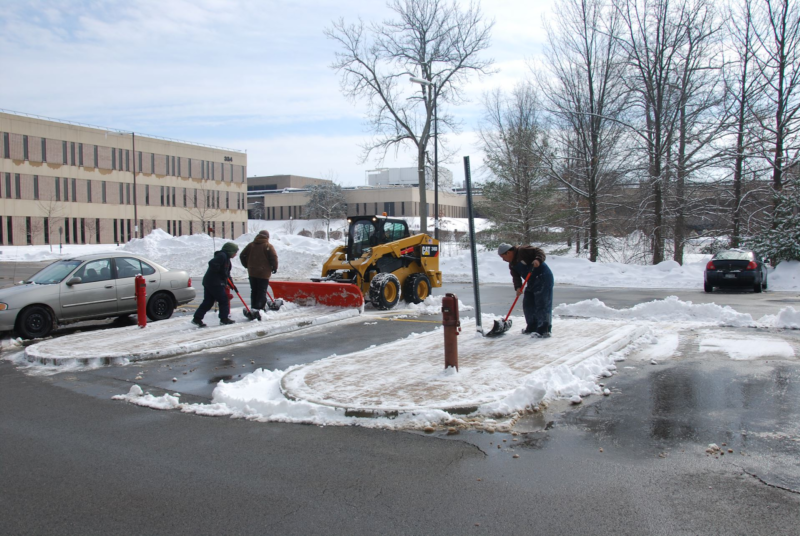 When you think of snow and ice management, you might think of those giant salt piles every major municipality has in order to make sure the roads are safe for drivers after a big winter storm.
When you think of snow and ice management, you might think of those giant salt piles every major municipality has in order to make sure the roads are safe for drivers after a big winter storm.
You probably know that those aren’t giant piles of table salt, though. (That’s sodium chloride.) Table salt isn’t the only salt used for de-icing, and in fact, it often isn’t the best choice, depending on the situation.
First, let’s take a look at the science behind de-icing. It works through a process called freezing point depression: Adding any kind of salt to water lowers its freezing point, which means it has to get a lot colder for that water to freeze. In a laboratory, ordinary water freezes at 32° F, but a solution of table salt and water freezes at -6° F.
In the real world, a sidewalk salted with sodium chloride melts ice down to about 15° F.
Here are a few of the de-icing solutions we use at Neave Group:
Calcium Chloride
There are other salts that lower water’s freezing point even more, such as calcium chloride. There’s more science behind that, too: When calcium chloride (CaCl2) dissolves in water, it splits into three ions, where sodium chloride (NaCl) dissolves into only two. The more ions a salt yields when dissolved in water, the lower the freezing point.
And the lower the water’s freezing point, the safer your sidewalks will be from dangerous icy patches.
That’s why our snow and ice management division prefers calcium chloride. And in addition to lowering the freezing point of water, it has ice-melting properties! Calcium chloride dissolves “exothermically,” which means it actually releases heat when it’s breaking apart and forming those ions that lower water’s temperature.
Ice Ban® 305
In addition to calcium chloride, we apply a product called Ice Ban® 305, an all-natural, environmentally friendly magnesium chloride additive. It’s manufactured to stay in liquid form down to -67° F (minus 67!), which increases its working range and reduces the chances of melted snow and ice refreezing between applications.
Ice Ban doesn’t absorb into the salt; the salt’s actually more of a carrier for the Ice Ban, so it’s two separate products acting together to keep your sidewalks clear and free from slippery spots.
We also use magnesium pellets to de-ice sidewalks because they’re less corrosive and dissolve faster than other chemicals. But the product we choose all depends on the situation and the application.
Bottom line: Leave the science to us.
Neave Group’s Snow and Ice Management Division is staffed with professionals who understand the scientific ins and outs and have the proper training to keep your commercial property safe throughout the winter, 24/7, no matter what frightful weather comes our way.
Give us a call at (845) 463-0592 for assistance with your property; or fill out the handy web form to the right.
There are plenty of unique factors that will contribute to your choice of snow and ice management contractors. Download our FREE white paper, “The Ultimate Guide to Hiring a Snow & Ice Management Contractor” to learn about the 10 must-have attributes and core values of a top-notch snow and ice management contractor.
image credit: Sister72